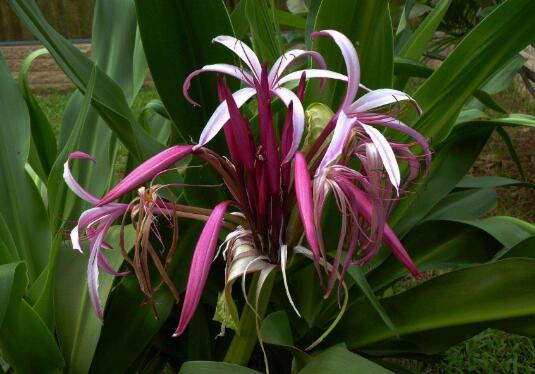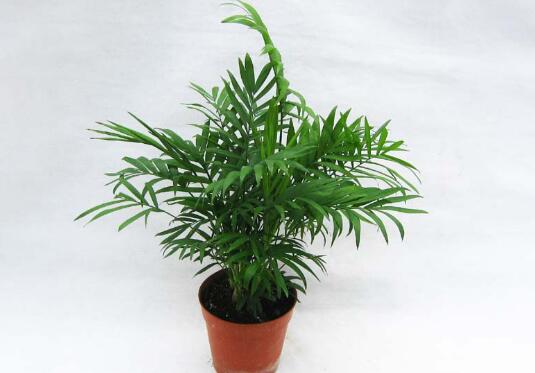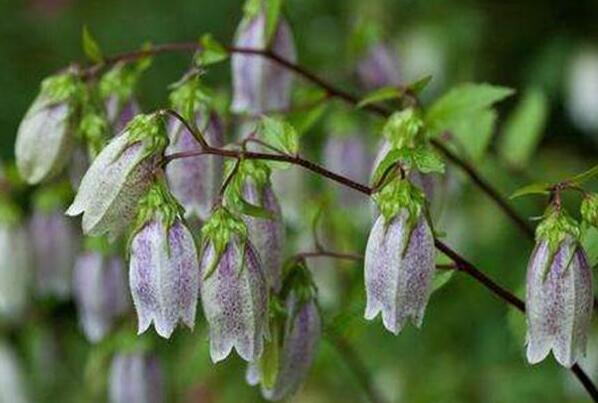What about the worms of Manjushri orchid? pest control of Wenshu orchid / 2 insect pests 2 diseases
In the process of cultivating Wenshu orchid, the last thing we want to encounter is the problem of diseases and insect pests, which do great harm to the plant, not only affect the ornamental, but also lead to plant death. What about the Manjushri bugs? How does pest control of Wenshulan need to be done? Next, the editor will take you to learn about it.
First, what about the worms of Wenshu orchid? find the reason.

II. Pest control of Wenshu orchid (pest)
1. Aphids
Among the diseases and insect pests of Wenshu orchid, aphids have a relatively high incidence, which mainly harms the leaves, stems, tender heads and young ears of Wenshu orchid. It will gradually absorb the juice, resulting in a large loss of nutrients and gradually withered phenomenon.
Control method: for this pest, we can use 1000 times of 50% fenitrothion emulsion to directly spray it.
two。 Whitefly
Whitefly is a small pest, but among the diseases and insect pests of Wenshu orchid, it belongs to the most harmful one. This pest pays attention to the juice of Wenshu orchid, and will gradually suck the juice in the stalk, resulting in a large loss of nutrients in the plant, and finally the phenomenon of wilting and death.
Control methods: when dealing with whitefly pests, we can use 20% of the wettable powder solution to spray the plant, usually once every 5-7 days, 3 times can completely eliminate this pest.
3. Pest control of Wenshu orchid (disease)
1. Leaf spot disease
Leaf spot is a kind of disease caused by fungi. Many yellowish-brown disease spots will appear on the leaves of Wenshu orchid, and the disease spots will gradually expand with the passage of time, resulting in the gradual death of the plant.
Prevention and control methods: when we control the diseases and insect pests of Wenshu orchid, we can spray the diseased plant with 800 times of wettable powder of 65% bacteria. Generally, we spray water once in 7-15 days, and then we can recover after 2-3 times.
two。 Soft rot
Soft rot is not only a common plant disease, but also one of the diseases of Wenshu orchid. At the initial stage of the disease, its leaves will gradually appear the phenomenon of green wilt, and its stem will also appear many watery spots, the color is yellowish, and will give off bursts of stench, which will gradually lead to the phenomenon of plant decay to death.
Control methods: in the prevention and control of this kind of Wenshu orchid diseases and insect pests, we can use 77% copper hydroxide wettable powder 400 times 600 times liquid to spray it, usually once every 7-10 days, about 3 times can be cured.
How to control the diseases and insect pests of potted Wenshu orchid?
Wenshu orchid needs to keep the basin soil moist in spring and summer. Because of its rapid growth and strong ability to absorb water and nutrients, it needs frequent watering and fertilization before and after flowering. After autumn, the weather is getting cooler and the growth of Wenshu orchid begins to slow. The amount of water should be gradually reduced. In Beijing, it should be moved indoors after mid-October and can be placed in a semi-shady place. The bulbs dormant in winter. The optimum temperature is 7-10 ℃. If the room temperature is low, watering should be strictly controlled and fertilization should be stopped.
In potted Wenshu orchid, the pedicel should be pruned in time after flower shedding, which can reduce the consumption of nutrients and promote the development of bulb. As long as shading in summer, heat preservation in winter and diligent application of fertilizer and water during the growing period, the white flowers of Wenshu orchid will bloom from June to September.
Wenshu orchid is usually propagated by sowing method and plant division method. It is suitable for sowing and propagation from March to April; if a small amount of seed is reproduced, it can be sowed directly in a small basin, and the seedlings will blossom after 3-4 years; split propagation will be carried out in combination with changing pots and soil in March-April in spring.
Pest control
Wenshu orchid is usually vulnerable to the harm of shell insects. If it is found that the number is small, it can be washed with clean water or brushed off manually; if the number is large, it can be sprayed 1000 times with 40% omethoate emulsion, and the effect is also very good.
Ornamental value
Manjusri orchids are beautiful in leaves and have high ornamental value. They can be used as ornaments for gardens, campuses, green spaces of institutions, lawns of residential communities, flowers for courtyard decoration, and hedges around houses; if potted plants are used, they can be placed in solemn conference halls, magnificent hotels, banquet hall doors, etc., elegant and generous, full of incense and pleasing to the eyes.
The conservation methods of potted Wenzhu orchids are introduced here. You are welcome to continue to pay attention to the succulent flower beds and learn more about orchids!
Planting techniques of Wenshu Orchid Disease Control methods of Wenshu Orchid
The name of Wenshulan may mislead people to think that this variety is an orchid plant, but in fact it is a sturdy perennial herb of Amaryllidaceae. Today, we will learn the planting skills and disease control methods of Wenshu orchid.
Planting skills of Wenshu Orchid
Adequate water supply in summer to keep the basin soil moist; topdressing dilute liquid fertilizer once a week
Calcium superphosphate should be applied once before scape extraction. The pedicel should be cut off in time after flowering. From March to April, the bulb should be planted in a basin of 20cm to 25cm, not too shallow, and the bulb should not be seen. After planting, the bulb should be fully watered and placed in the shade. Wenshu orchid planted in the ground should be planted every 2 ~ 3 years to keep the plant strong and bloom luxuriantly, otherwise the growth is not prosperous and the flowering is rare.
Ramet and sowing are often used to propagate.
Ramet propagation
Ramet can be carried out in spring and autumn, in combination with changing pots in spring. Pour the mother plant out of the basin, peel off the bulbs around it, and plant them separately.
Sowing and reproduction
It is suitable for March to April. Artificial pollination is needed in the north, otherwise it is not easy to bear fruit. The water content of seeds is high, so it is suitable to sow immediately after harvest. Can be sowed in a shallow basin, covering soil about 2 cm thick, watered thoroughly, keep moderately moist at 16-22 ℃, not too wet, and sprout after about 2 weeks. When the seedlings grow 2-3 true leaves, they can be transplanted in a small pot. It can blossom after 3 or 4 years of cultivation.
Key points of management
1. Big pot and deep planting. In order to meet the nutrients needed during the growth period of Wenshu orchid, larger flowerpots should be selected for deep planting in order to conserve water and soil and supply root development.
2. Water and fertilizer management. During the normal growth period of Wenshu orchid, appropriate amount of water was watered every day from May to September, dry and wet. The fertilizer and water made by retting with cruller residue and black alum (ferrous sulfate) should be applied every 7 to 10 days, and its concentration should be light at first and then concentrated, and stop applying in winter.
3. Erase the evil bud. Wenshu orchid in the vigorous growth period, always from the rhizome around the sprouts, in order to ensure that the plant shape upright, rhizome neat, the normal growth of the whole plant, should be timely erased buds.
4. Sunshine and shade. In order to make the leaves green, beautiful and tidy without affecting the light, Wenshu orchids should be properly shaded in hot summer, receive full sunshine from 7 a.m. to 12:00, and shade from 12:00 to 15:00.
Housekeeping management
Wenshu orchids are potted in northern China. When the temperature dropped to 8 degrees Celsius in early September or late October, the potted flowers were moved indoors and placed in a dry place with a temperature of about 10 ℃. No watering was needed and fertilization was terminated. Once it is difficult to recover from cold damage, when the room temperature is less than 6 degrees Celsius and the basin soil is too wet, it will rot and die from the ground, so there should be light when entering the house, the basin soil should not be too wet, and the air humidity should be too small to spray water to wash leaves to improve air humidity. [8]
① cools and humidifies in summer. Wenshulan is afraid of hot sun exposure in summer, so after entering summer, the plant should be moved to the shade shed or north balcony for maintenance, and often sprinkle water to the ground to create a cool and humid environment.
② was watered frequently during the growing period. Water is watered every 1-2 days in spring, once every evening in summer, and reduced in autumn. Watering is strictly controlled in winter (usually watering about once every 2 weeks).
③ keeps warm in winter. The plants were moved indoors in the northern region in the first ten days of October and placed in the sunny place in the southern region in the first ten days of November. The temperature was kept between 8 and 10 ℃ to survive the winter.
Disease control methods of Wenshu orchid
Symptoms of leaf spot disease
Most of the leaf spots start from the leaf tip or leaf edge, semicircular, oval,
Spindle shape to amorphous, yellowish brown, tan or taupe, disease spot with yellow halo. The disease spot is usually larger, with a transverse diameter of more than 1 cm and a length of up to several centimeters, some of which are connected with growing stripes. There are small black spots or small black grains (fungus fruiting body) on the spot.
Pathogen and characteristics of disease
The pathogens are semi-known subphylum fungi, including Alternaria, Alternaria, Polyspora, Alternaria and Phytophthora. All the pathogens overwintered as mycelia and fruiting bodies on diseased leaves and remnants, transmitted by conidia through wind and rain, and invaded from the orifice or wound. Warm and humid weather and gloomy garden environment are conducive to the disease.
Prevention and cure method
① was used to remove the diseased body and burn it centrally.
In the early stage of ②, 75% Bai Yinqing + 70% topiramate wettable powder (1 ∶ 1) was sprayed 800 times, or 30% copper oxychloride 500 times, or 50% compound carbendazim 800 times, or 40% polysulfide gel suspension 600 times, or 25% carbendazim 500 times, or 50% Baogong wettable powder 1000 times, or 69% Anke manganese zinc + 75% chlorothalonil wettable powder (1 ∶ 1) 1000 times 1500 times. Or 15% imidazole wettable powder 2000 times liquid, or 65% multi-gram bacteria wettable powder 800x liquid, or more than 40% Fengnong wettable powder 600x liquid. Spray once every 7: 15 days depending on the weather, several times in a row.
- Prev

What to do with the long worm of pocket coconut? pest control of pocket coconut / 1 pest 2 diseases
When we cultivate pocket coconuts, if we are not careful enough, it is easy to let diseases and insect pests enter. This kind of problems do great harm to the plants, not only affect the ornamental, but also lead to plant death in serious cases. So what about the pocket coconut worm? How to prevent and control diseases and insect pests of pocket coconut
- Next

Disease and pest control methods of Campanula, prevention and treatment skills of two insect pests / two diseases
Any flower friend does not want to see wind chimney worms or disease spots, but in order to prevent plants from being infested by pests and germs, in addition to mastering the culture methods of bluebells, we also need to do a good job of prevention and treatment. at present, the main diseases and insect pests are aphids, red spiders, powdery mildew and leaf spot.
Related
- Fuxing push coffee new agricultural production and marketing class: lack of small-scale processing plants
- Jujube rice field leisure farm deep ploughing Yilan for five years to create a space for organic food and play
- Nongyu Farm-A trial of organic papaya for brave women with advanced technology
- Four points for attention in the prevention and control of diseases and insect pests of edible fungi
- How to add nutrient solution to Edible Fungi
- Is there any good way to control edible fungus mites?
- Open Inoculation Technology of Edible Fungi
- Is there any clever way to use fertilizer for edible fungus in winter?
- What agents are used to kill the pathogens of edible fungi in the mushroom shed?
- Rapid drying of Edible Fungi

